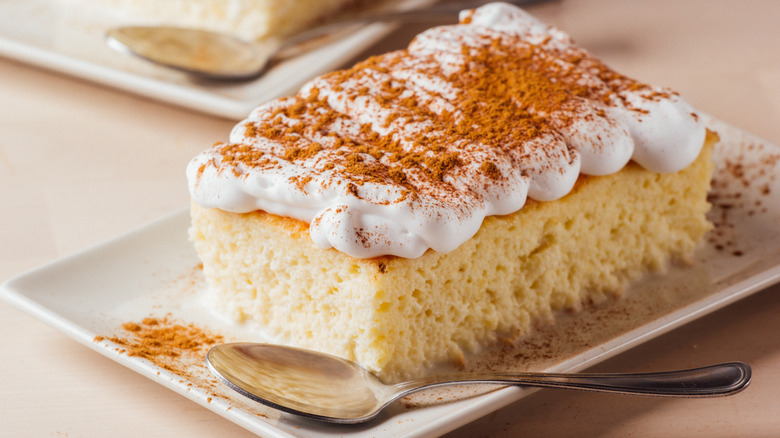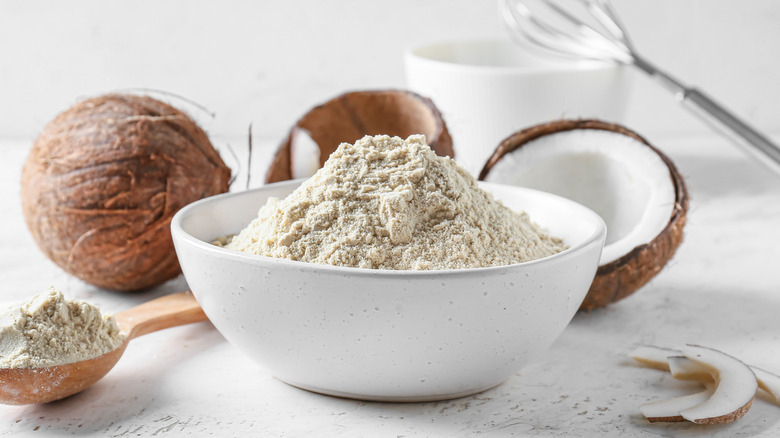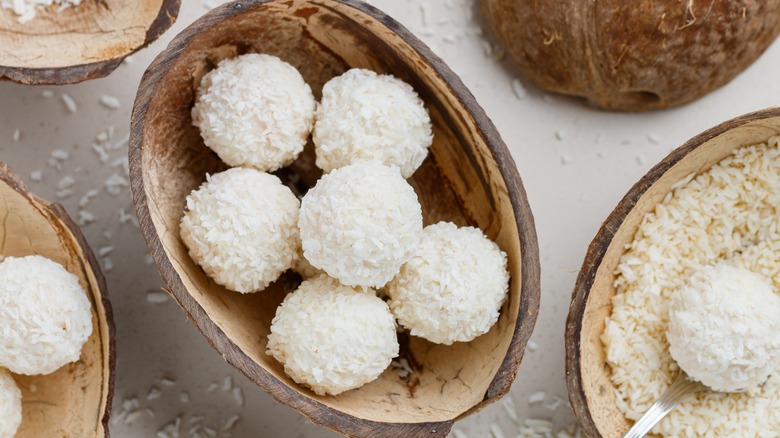The Proper Way To Use Coconut Flour As A Gluten-Free Option In Baking
Coconut is a known and loved ingredient that can provide depth, creaminess, and a subtle fruity sweet flavor to recipes in its various forms, including coconut milk, oil, and flakes. One equally versatile form of coconut you may be less familiar with is coconut flour. Made by grinding dried coconut meat into flour, coconut flour is a delicious ingredient that can be used in gluten-free baking.
Like many gluten-free flours out there, however, it's important to know how to swap it into your recipes, as not all flours are equal in functionality. Specifically, due to its high fat, fiber, and protein content, and the fact that it doesn't contain starch, when used in gluten-free baking coconut flour will absorb liquid in batters and doughs more readily than other gluten-free flours that contain more starch and carbohydrates.
Because of this tendency to soak up moisture, in many cases, you can't substitute coconut flour 1:1 in bakes that require structure or have a finer crumb like cakes and cookies, as they will turn out extremely dense and gummy. When baking with coconut flour, instead it's important to swap it in at a 25% usage rate in your recipes, or about ¼ cup coconut flour for every cup of all-purpose flour. It also helps to use coconut flour in combination with other starchy gluten-free flours like rice or potato starch and increase the liquid and number of eggs in your recipe.
Recipe adjustments when using coconut flour
When baking with coconut flour, you can increase the liquid in your recipe, adding a tablespoon extra at a time, to make up for the moisture absorbed by the flour. It also helps to add in extra eggs to your recipe (about one egg for every ¼ cup of coconut flour) to improve the structure and chew, as well as add moisture back to your bakes. In recipes like coconut flour pancakes, more eggs are added than in a typical pancake batter to provide that extra bulk and structure. Since it can hold onto water, you may also consider folding in whipped egg whites to your cake and cookie batter, like you would when making homemade French macaron cookies or airy angel food cake, to result in lighter bakes and counteract some of the density that the coconut flour imparts.
Since coconut flour lacks the starch and structure of wheat flours containing gluten, combine it with other gluten-free flour alternatives when using it in your recipes. Effective gluten-free flour blends like Bob's Red Mill 1:1 Baking Flour include mixtures of rice flour, potato starch, and sorghum flour, as well as thickening agents like tapioca starch and xanthan gum to help bind ingredients and provide structure. You can make your own similar blend at home using coconut flour and subbing other flours like almond, cassava, or rice.
Additional tips when baking with coconut flour
Compared to all-purpose flour and many gluten-free alternatives, coconut flour has a stronger flavor profile that is distinctly buttery and milky. Based on your recipe, using this flour may impart coconut undertones. This is great for making gluten-free versions of your favorite homemade ultimate coconut cake, and will amplify the delicious silky coconut buttercream and toasted coconut flake flavors. However, if you are looking for a more neutral flavor profile, consider using coconut flour in smaller quantities or opt for more flavorless flours like rice or potato.
Additionally, when baking with coconut flour, to ensure the optimal texture for your cakes, muffins, and cakes, it's best to sift the flour with a fine mesh sieve prior to combining the dry ingredients with the wet ingredients in your recipe to avoid flour clumps. Because of its higher fat content, coconut flour is also more prone to fat oxidation that could cause rancidity, and has a shorter shelf life (about six to 12 months) compared to other flours like those derived from wheat. Since coconut flour is used in relatively small quantities, you can store your bag of coconut flour in the freezer to extend the time it lasts for use in all your gluten-free baking creations.


